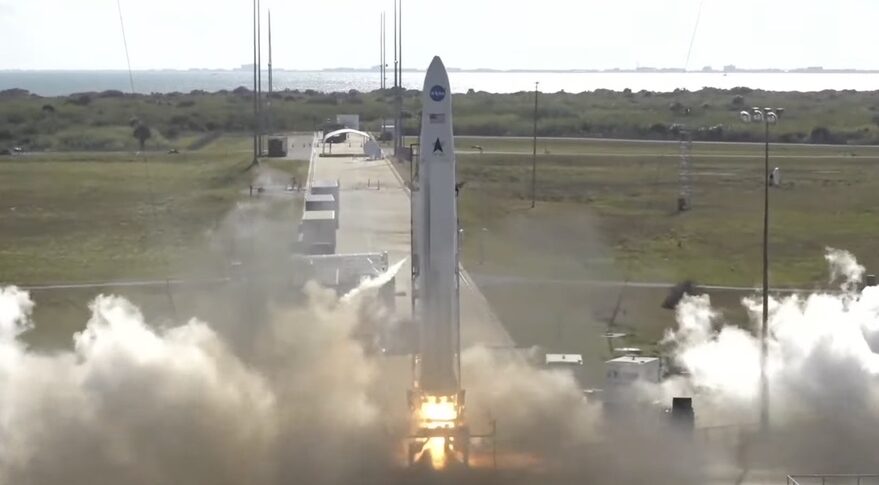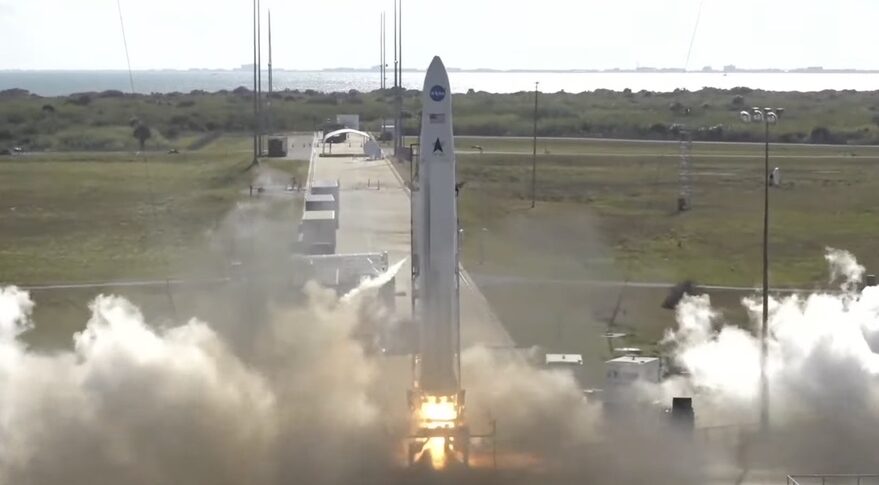
What Went Wrong With Astra’s Most Recent Launch?
Launching and successfully reaching orbit with a rocket is an unbelievably complex and difficult task. After many attempts, Astra was able to have its first successful launch only a few months prior. However, the most recent launch attempt did not go as planned. Here I will highlight the general mission details and what exactly went wrong.
On February 10th, only a few days ago, Astra launched its rocket for the seventh time hoping for the second successful mission ever. On the very top were 4 satellites headed to low Earth orbit. However, only a few minutes after launch the rocket experienced a violent stage separation, and the camera on the upper stage showed a view of the rocket spinning out of control. It was confirmed that something had gone wrong and the payloads were not delivered.
There are practically endless things that can go wrong during a rocket launch. Over the past few years, Astra has continued to improve, innovate, and make their LV0008 launch vehicle even better as time goes on. However, something went very wrong on this specific launch. While it’s not the outcome Astra was hoping for, they still have a lot to work on and improve prior to more launches.
Mission Overview
This launch was quite a big deal for not only Astra but NASA as well. The launch vehicle named Rocket 3.3 or LV0008, was intended to launch a few days prior but was delayed. This kept happening until it finally launched on February 10th. The mission and payload on top was a part of NASA’s ELaNa 41 mission. Specifically, there were four small research satellites intended for low Earth orbit. Also known as CubeSats, they were developed by three universities and NASA’s Johnson Space Center. The CubeSats, selected through NASA’s CubeSat Launch Initiative, are flying on the Educational Launch of Nanosatellites. The initial target date for launch was January, however, it was delayed multiple times due to a number of reasons. One of the first attempts was on February 5th. Astra stood down on this mission due to a range asset that went out of service.
The next attempt was on February 7th, in this case, the launch was aborted at T-0. Astra soon tweeted that they were “Standing down today due to a minor telemetry issue. We are giving the team time to complete a thorough review and will provide an update on the next launch opportunity for @NASA’s ELaNa 41 mission soon #AdAstra”. This finally led to the launch attempt on the 10th. This was Astra’s seventh launch, however, there were quite a lot of firsts. While the company’s last launch was the first fully successful one, they still are very early in development and testing of this rocket. While all the previous Astra launches were in Alaska, this was the first in Florida. In addition, it was Astra’s first operational satellite launch. Unfortunately for Astra and NASA, the mission did not go according to plan.
What Went Wrong?

Rocket 3.3 took off per usual and began accelerating and gaining altitude. Right at 3 minutes and 2 seconds into the launch, MECO is announced. You can see a small jolt from the camera onboard the upper stage. Just around 5 seconds later there is a large jolt where it looks like the rocket at that point was intended to separate stages but stayed connected. 4 seconds later, while both stages are still attached, the upper stage lights its engine and forcefully ejects the stages apart from each other. At the exact same time, the fairings are separated and ejected as well. For the next 30 seconds, we see the upper stage spinning extremely rapidly as the Earth comes in and out of frame in the background. Just about 34 seconds after the violent separation of stages the cameras are switched back to the launch pad.
Not long after Astra tweeted, “We experienced an issue during today’s flight that resulted in the payloads not being delivered to orbit. We are deeply sorry to our customers @NASA and the small satellite teams. More information will be provided after we complete a data review.” While the specifics of what exactly went wrong are not known, the video provides us with a decent idea. In addition to this, Astra CEO tweeted saying, “We experienced an issue in today’s flight. I’m deeply sorry we were not able to deliver our customer’s payloads. I’m with the team looking at data, and we will provide more info as soon as we can.” It’s very clear from the footage along with the reactions from Astra, NASA, and more that they need to look into the problem closer to find out exactly what went wrong. While their last launch was a success, getting a rocket to orbit no matter how much experience or previous success is still a very difficult task. NASA even posted an update saying, “Following launch, an in-flight anomaly prevented delivery of the CubeSat payloads on NASA’s Educational Launch of Nanosatellites (ELaNa 41) mission.” The mission manager with NASA’s Launch Services Program went on to say, “Missions like these are critical for developing new launch vehicles in this growing commercial sector,” and “The Astra team demonstrated dedication to supporting NASA’s mission. The lessons learned will benefit them and the agency going forward.”
NASA knows very well the difficulty and risks with practically any launch. While the outcome is not what was intended, they still support Astra and knew the risks prior. In addition to the loss of the 4 CubeSats on board, Astra’s stock took a large hit as well. Right after the launch failure it took a steep loss and has continued over the last few days. Specifically, in the last 5 days Astra stock or ASTR has gone down over 40%. This is practically a given as a launch failure is seen by many as a very big deal and scares investors. In reality, Astra has managed to make very impressive progress in a short period of time. This was only the company’s seventh launch and they likely have a bright future ahead of them. While this most recent launch did not go according to plan, it was still successful for the first 3 minutes. Not to mention Astra had their first fully successful mission only a few months ago on their sixth flight. Astra will need to find out exactly what happened on this launch and fix it. If the company continues on its current track and continues to develop and innovate, they are likely to have a big impact on the space industry in the future.
Conclusion
Astra attempted the company’s seventh launch only a few days ago on February 10th. Over the past few years, the space company had been working to develop, manufacture, test, and launch their small-lift launch vehicle. Unfortunately, their most recent launch was unsuccessful as it experienced an error right around stage separation. This caused the launch vehicle to stay attached prior to the upper stage engine lighting and violently sending the stage into a spin. While not the intended outcome, this mission still provides Astra with a lot of valuable information, and things to work on before the next launch. We will have to wait and see how the company develops, and the impact it has on the space industry.
